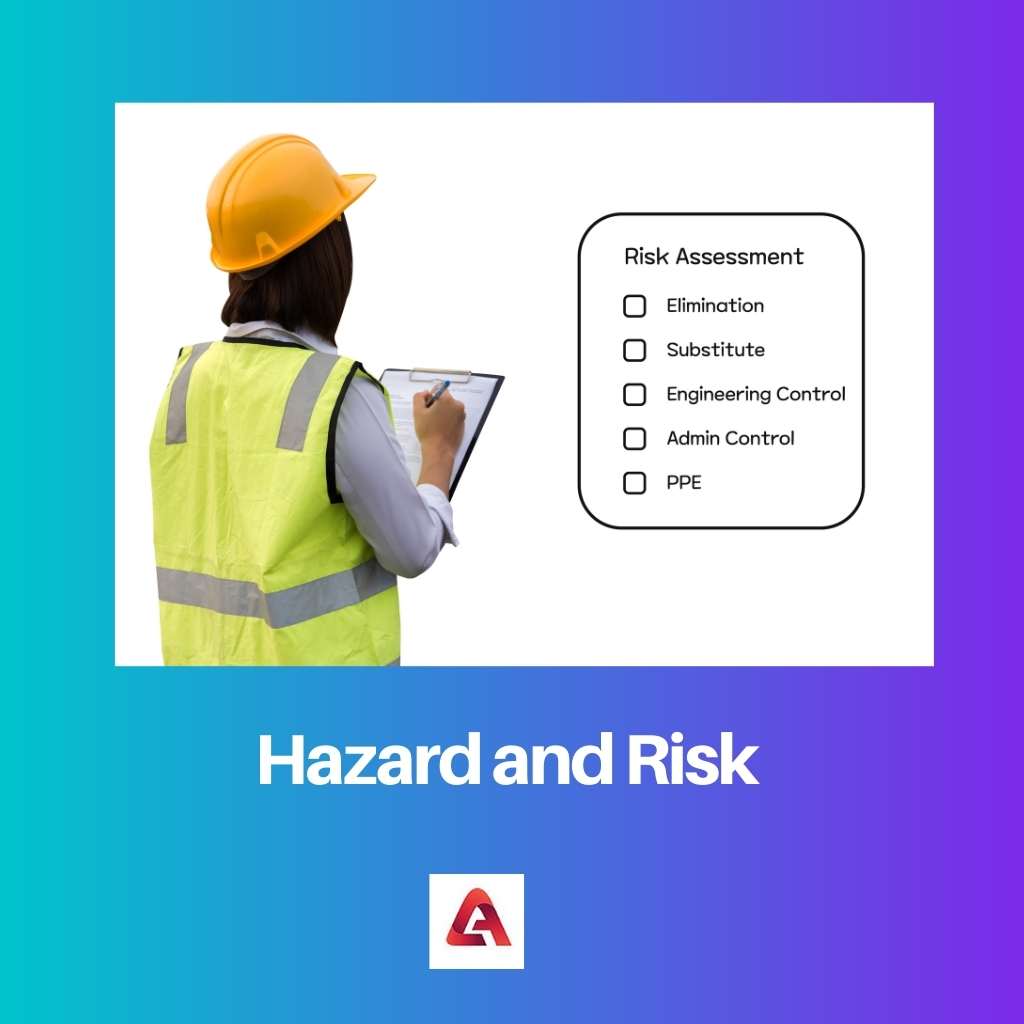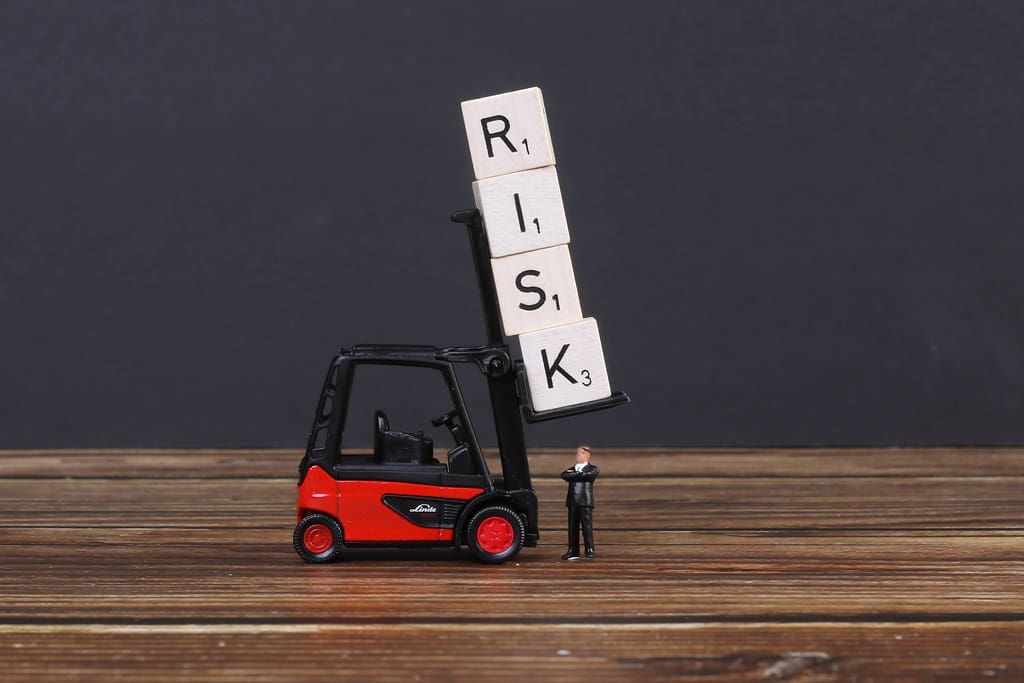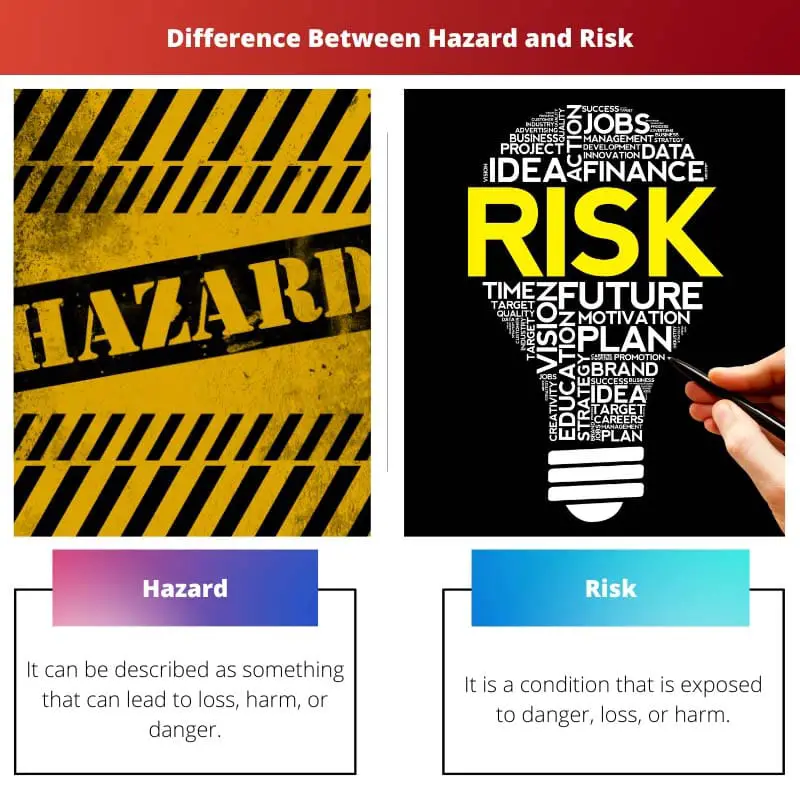The world in which we dwell is completely uncertain. The factors are in end number which has the capability of endangering financial, physical, or moral health, which is beyond our control and always surrounds us.
It is common for everyone to encounter loss of life and property, tragic deaths, or casualties due to human-made disasters or natural calamities.
These kinds of forces ultimately pose a great risk to human wealth or life or nature. Most people use hazard and risk words in these situations synonymously. In this article, the chief focus is on differentiating hazard and risk to clear up the confusion.
Key Takeaways
- Hazards are potential sources of harm, while risk measures the likelihood and impact of harm.
- Identifying hazards is the first step in risk management, followed by assessing and mitigating risks.
- Risk can be reduced by implementing safety measures and reducing exposure to hazards.
Hazard and Risk
A hazard is any source of potential damage, harm or adverse health effects on something or someone. Basically, a hazard is the potential for harm or an adverse effect. Risk is the possibility of something bad happening. Risk involves uncertainty about the effects/implications of an activity with respect to something that humans value.

The term hazard has a particular meaning in the context of occupational health and safety. When it comes to Occupational Safety, it can be referred to as a potential damage source or simply describes something that leads to harm to a person.
The harm or danger can either be long-term or simply immediate.
Risk described the possibility or chance of suffering harm or loss. In workplace safety or Occupational Safety risk, describes the probability that injury or harm may occur when exposed to a hazard.
Both risk and hazard are interconnected in this case. Risk management goals to prevent or reduce risks in the context where risks are harmful.
Comparison Table
| Parameters of Comparison | Hazard | Risk |
|---|---|---|
| Interpretation | It can be described as something that can lead to loss, harm, or danger. | It is a condition that is exposed to danger, loss, or harm. |
| Represents | A physical object, setting, or situation | Probability |
| Potential | A potential source of harm | Potential of harm |
| Expression | Cannot be expressed in degrees | Can be expressed in degrees |
| Usage in sentences | When it comes to wildlife, polluted sources are a great hazard to them. | Ray risked breaking his neck. |
What is Hazard?
Circumstances, events, or substances can constitute a hazard when its nature allows them or even just theoretically for causing damage to property, health, life, or any other value interest.
That harm’s probability being realized in a particular when combined with the potential harm’s magnitude make up its risk.
Hazards can be categorized in many ways such as technological, natural, anthropogenic, or any combination like in the case of wildfire’s natural phenomena becoming common due to building practices change.
The most common theme among many kinds of hazards is the stored energy presence when released lead damage.
Sometimes, hazards can be categorized into three statutes or modes such as active, armed, and dormant. Firstly, the active hazard is a harmful incident consisting hazard that has occurred.
Secondly, armed hazards’ property, environment, or people are in way of potential harm.
Thirdly, dormant hazard in which situation environment is affected currently. Hazards identification assumes that the potential targets are mainly defined. In several cases, it might affect targets in a long-range and have little or even no effect on others.

What is Risk?
Risk in simple terms can be described as something bad happening’s possibility. It consists of uncertainty related to implications of activity to something that humans value focusing on undesirable and negative consequences.
The common methods of measurements, management of risk, and even the risk definition differ in different practices areas.
There are mainly business, environmental, economic, health, financial, insurance, information technology, project, occupational, security, and safety risks.
In all their life areas risk is ubiquitous, and we manage these risks intuitively or consciously, whether crossing the road or managing a large organization.
Risk management describes a systematic approach for managing risks. The risk management international standard is ISO 31000 refers to a process of risk management.
The risk management goal is to assist organizations in achieving the objective, setting the strategy, and making informed decisions.
When it comes to risk identification, its process consists of the finding, recognizing, and recording of risks. It consists of the identification of risk events, sources, potential consequences, and their causes.
Sometimes, it is limited to documenting and finding risks that are to be evaluated and analyzed elsewhere.

Main Differences Hazard and Risk
- When talking about hazards, it has the potential to cause harm or damage and that’s why it is not negligible when compared to risks. In contrast, the risk is the only likelihood of harm or damage and that’s why risk can be negligible in comparison to hazard.
- Hazard cannot be minimized and remains the same as it is not possible to identify hazards like long-term chemical exposure. On the other hand, if risks are identified beforehand they can be minimized like in the case of slippery floor that area can be restricted if someone identifies it.
- When it comes to types, a hazard can be divided into three kinds physical hazard, moral hazard, and morale hazard. Conversely, risk can be divided into particular risks, dynamic risk, fundamental risk, static risk, objective risk, financial risk, objective risk, and non-financial risk.
- In terms of origin, the hazard is a term that has been derived from the word “hazard’ of Old French which define a “game of chance using dice”. On the contrary, risk has been taken from the word “rizikon” of classical Greek and later was used as “cliff” in the Latin language.
- Examples of hazards are electricity, welding, wet floor, knife, bullying, and Hard Rock mining. On the flip side, exposure to noise, chemicals, fumes, floods, and fire are some of the instances of risk.

References
- https://www.jstor.org/stable/2334205
- http://bear.warrington.ufl.edu/aitsahlia/Financial_Risk_Management.pdf

The comparison table included in this article provides a clear and concise way to understand the differences between hazards and risks. A very informative read!
The article does an excellent job of addressing hazards and risks in the context of safety and provides a detailed insight into the management of risks. Great read overall.
Fully agree, the insights provided in this article are valuable and contribute to a better understanding of hazards and risks.
This article does an excellent job of detailing the critical differences between hazard and risk, providing comprehensive definitions of each term and separating them effectively.
The article presents a well-documented explanation of the meaning of hazards and risks, along with their main differences and origins. The details provided are highly informative and valuable.
This article serves as a valuable resource for understanding the nuances of hazards and risks. The content is thorough and presents an in-depth analysis of the subject matter, making it an informative read overall.
The article provides a comprehensive analysis of hazards and risks, offering valuable information on their categorization and the main differences between the two. A great resource for those seeking to deepen their understanding of these concepts.